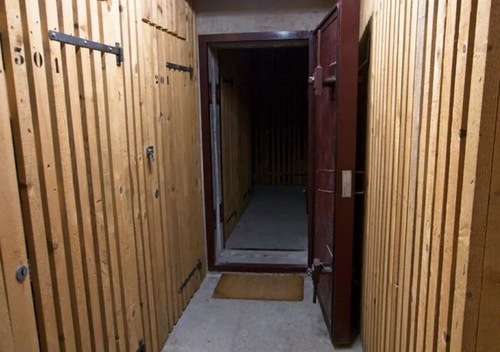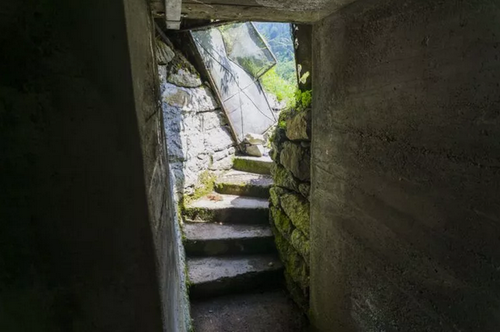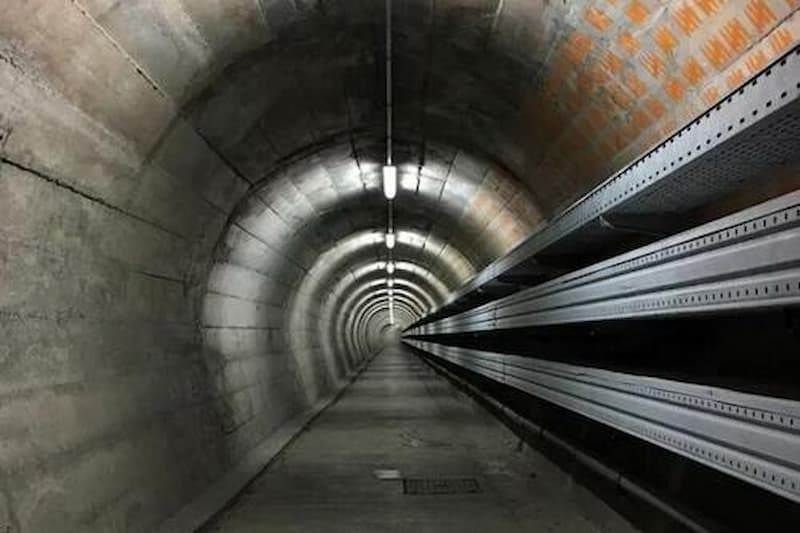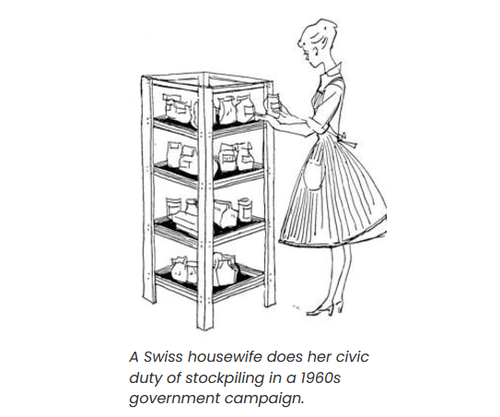(Paige Baschuk) A nuclear fallout shelter for all 9 million residents of Switzerland? Why the country has been preparing for nuclear war for decades and what residents are expected to do in the event of one.
Related Biden Linked Swiss Diplomat Found DEAD In Tehran
by Paige Baschuk, March 13th, 2022
After Russia’s attack this week on Ukrainian power plant Zaporizhzhya, the Swiss government reassured residents that the country is prepared for every kind of attack – even a nuclear one, with fallout shelters for every resident of Switzerland.
We’ve got you covered
“Neutrality is no guarantee against radioactivity,” was the government slogan that went around at the beginning of the Cold War to fund the building of fallout shelters. A law was passed quickly after that every “inhabitant must have a protected place that can be reached quickly from his place of residence” and “apartment block owners are required to construct and fit out shelters in all new dwellings.” This bunker must either be built into one’s home or apartment building, or residents can pay a special tax to secure a space in a communal shelter.
But these shelters are not typical basements or even what you would use during a tornado. They are built at least 3 meters below ground and the walls are made of several centimeters thick concrete. The doors lock with an airtight seal and the ventilation does not allow deadly nuclear toxins in, but also prevents carbon monoxide poisoning. Shelters are built to be able to withstand a 12-megaton explosion within 700 meters of the blast.
The largest Swiss shelter was constructed at the height of the fallout shelter building boom in the 1970s. Up to 20,000 people can take refuge in the Sonnenberg tunnel in Lucerne. On the floors above the tunnel was constructed a small hospital (with an operating room), a radio broadcast station and a control center to help the survivors get back on their feet. However in 2006, most of the infrastructure was dismantled as nuclear war became less and less of a reality.

The Swiss are not alone
Switzerland is not the only country that has prepared for anything. In Sweden, there is shelter for about 80% of the population and 70% in Finland. In Austria, about 30% have fallout shelters and in Germany, only 3% are covered. Outside of Europe, fallout shelters are common in newer construction projects in India, China, Singapore and South Korea – but none of their figures exceed 50% of the population.
But, do we need these?
As Switzerland spends more than 20% of its federal budget on protecting its citizens from every kind of disaster or invader, there was pushback against continuing to build shelters as a part of new construction projects.
In 2005, a parliament member created an initiative to stop spending on shelters and called then “relics of the past.” In doing its due diligence, the government researched the usefulness of such shelters and concluded months later that not only were they still useful in the event of a war, but could also save people during chemical accidents, natural disasters and possible terrorist attacks.

How to prep your bunker
As I made my way down to my own bomb shelter last week in the basement of my apartment building in Geneva, I found two of my neighbors sorting through bottles of wine and ski equipment.
“Time to fill it again, right?” one of my neighbors said in gruff French, shrugging his shoulders.
“One must be prepared for everything,” his wife replied, going about her work stacking canned foods. I nodded in agreement, trying to look Swiss.
If the Swiss are the most organized and prepared people on earth (and I believe this to be true after living here 8 years), then stocking your nuclear bunker is the height of being Swiss. And no worries about trying to figure out what goes in your bunker, the government has a “vademecum” to guide you.
According to the Federal Office for Economic Supply, residents should be expected to stay in their bunkers for up to five days in the event of nuclear war. Every bunker should include:
- Nine liters of water per person;
- A week’s worth of food for every person;
- Medicine of all sorts;
- Potassium iodide tablets; and, if you can,
- A flashlight and extra batteries;
- A radio;
- Blankets or sleeping bags.
While one’s shelter should be stocked, all Swiss homes are advised to have at least two months’ worth of food stockpiled, according to the Swiss government.
A week after the First World War began, Swiss store shelves were emptied of rice, coffee, and canned foods, so the Swiss government had to introduce rationing. During WWII, protestors carried banners reading “Hoarding is a betrayal of our Homeland,” but citizens continued to buy too much and cause panic. At the end of that war, the government mandated that every household should stockpile two kilograms of sugar, one liter of oil, 2 kilograms of rice and 1 kilogram of pasta, flour and/or canned food. Citizens appeared to relax in the years following 1945, but stockpiles became popular again when the Soviet Union invaded Hungary in 1956.
According to historian Sibylle Marti, the government campaigns for stockpiling were to “embed the Cold War threat into the everyday lives of the Swiss. This was part of the intellectual defense of the nation aimed at reinforcing national identity and the norms and values that were thought to be Swiss.”
The campaign worked as preparedness became ingrained with the Swiss identity. The government has reasserted the importance of bunkers and stocking them through media campaigns with each global conflict, including the 9/11 attacks, the Covid-19 pandemic and now Russia’s invasion of Ukraine.
Organic Lion’s Mane Mushroom, proven to grow new brain cells and synapses. Guard against Alzheimer’s, dementia, and mental decline. Save 10% and get free shipping with a subscription!“I can feel my mind getting sharper with Lion’s Mane. I put it in my coffee.”
Get your Lion’s Mane from Ascent Nutrition, one of the most pure and potent in the industry.
About The Author
Paige Baschuk is an American writer living in Geneva. She has been published in The Daily Briefing, Reader’s Digest, and Garden & Gun magazine among others. In her years working as a journalist, she has covered every topic from crime and politics to health and education, garnering a first-place prize for investigative journalism. These days, she’s happiest hiking the Alps in between editing her first novel. Paige is the Editor-In-Chief of UltraSwiss.
Stillness in the Storm Editor: Why did we post this?
The news is important to all people because it is where we come to know new things about the world, which leads to the development of more life goals that lead to life wisdom. The news also serves as a social connection tool, as we tend to relate to those who know about and believe the things we do. With the power of an open truth-seeking mind in hand, the individual can grow wise and the collective can prosper.
– Justin
Not sure how to make sense of this? Want to learn how to discern like a pro? Read this essential guide to discernment, analysis of claims, and understanding the truth in a world of deception: 4 Key Steps of Discernment – Advanced Truth-Seeking Tools.
Stillness in the Storm Editor’s note: Did you find a spelling error or grammatical mistake? Send an email to [email protected], with the error and suggested correction, along with the headline and url. Do you think this article needs an update? Or do you just have some feedback? Send us an email at [email protected]. Thank you for reading.
Source:
https://www.zerohedge.com/geopolitical/bunker-down-why-switzerland-prepared-big-one
Support our work! (Avoid Big Tech PayPal and Patreon)DIRECT DONATION



Leave a Reply